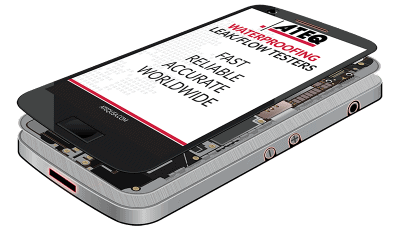Optimize Your Production with ATEQ’s Solutions for Smartphone Leak Testing and Waterproofing Compliance
Waterproofing smartphones is essential to delivering reliable and durable devices that meet consumer expectations. Manufacturers require precise, efficient leak testing solutions to ensure every component, from ports to screens, adheres to the highest quality standards.
ATEQ provides cutting-edge equipment like the F620 differential tester, the compact F28 Light, and the versatile F600, all designed to seamlessly integrate into your production lines. These testers enable precise evaluation of components and fully assembled devices, ensuring compliance with IP67 / IP 68 standards.
Our sealed component ingress testing method assesses final products by placing them in pressurized chambers to detect even the smallest air infiltration. This ensures devices are airtight and meet stringent waterproofing requirements.
With 50 years of expertise, ATEQ has become a trusted partner for global manufacturers, offering advanced solutions tailored to streamline your leak and flow testing processes. Our engineering experts work closely with you to optimize production efficiency and uphold exceptional quality standards, ensuring your smartphones maintain reliability and waterproof integrity.
Contact an ATEQ Application Engineer today to discuss your smartphone leak testing needs and optimize your production line.
Read ATEQ’s full Leak Testing Waterproof Electronics article.


